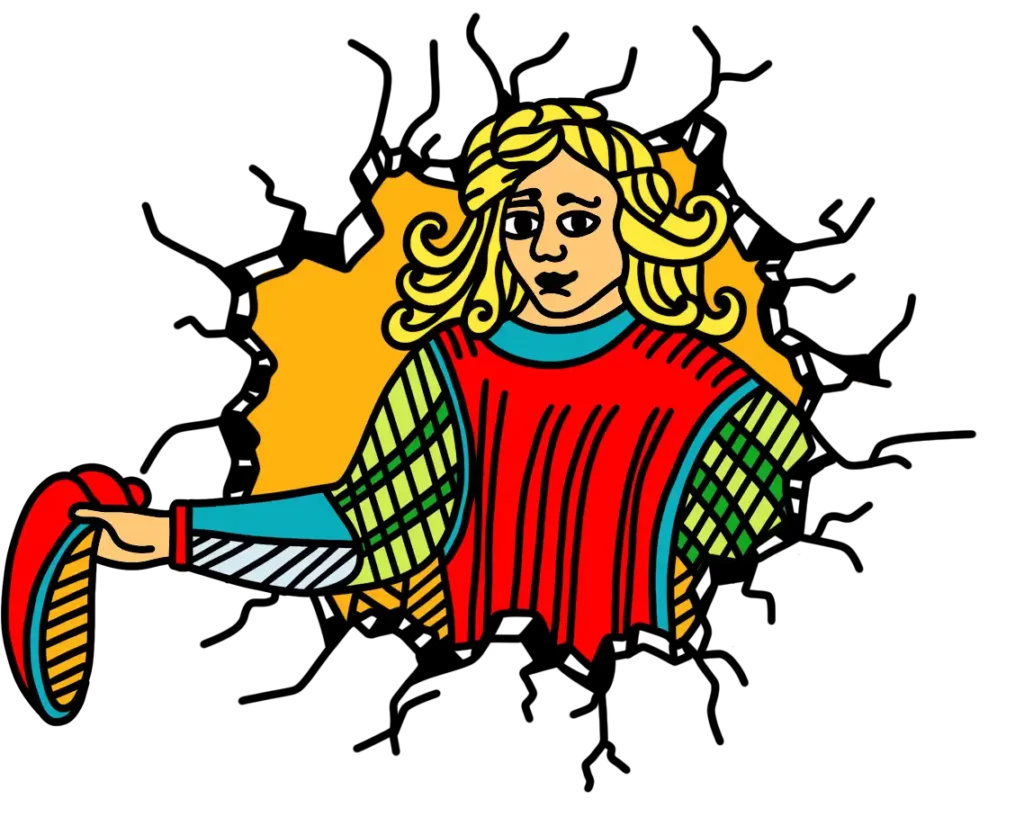
“Nothing is the word of recognition of noble travelers. This is the entrance and this is the exit to the labyrinth.”
The name of this card is called “le labyrinthe” in French. It can be translated as “the labyrinth” in English. If you notice any translation errors in this article, please let us know for our entire community. You can leave your comment at the bottom of this page.

This famous labyrinth, how to get out of it and why enter it? The whole question was how did we get into this structure? For what purpose?Now that we are stuck there, all that remains is to find the exit which could be our entrance, but also another unknown path?The exits from the maze can be multiple. strong> As the saying goes, every problem has its solution, I would even say its solutions.
The myth of the minotaur is the foundation of the history of the labyrinth. This diabolical beast, half-man, half-animal, is locked in a specially constructed labyrinth so that he cannot escape and no one discovers his existence. This architecture was built by an architect named Daedalus and called “labyrinth”. Daedalus invented an architecture so that the minotaur could not escape. This minotaur, half-man, half-bull, devours every 9 years, 7 boys and 7 girls according to the myth. Theseus, hero of this story, sets out to defeat this monster and acts as the savior of this dark story. Ariane, in love with Theseus and with the promise of being married, gave him a ball of thread, the famous Ariadne’s thread, so that Theseus could find the way out of the labyrinth. Ariane holds the spool of thread that Theseus unwinds as he goes along to avoid getting lost. Theseus’ fight against the Minotaur actually reflects the quest of all men to overcome their inner impulses. Like Theseus, man must navigate the labyrinth of his unconscious to overcome his animal nature. The minotaur defeated, Theseus retraced his steps and did not keep his promise to Ariadne. He abandoned her on the island of Naxos. Theseus does not keep his promise and leaves Ariadne to her sad fate. Hero and savior, manipulator and liar, Theseus forgot to change the sails of his boat when returning home and was lost at sea. Moral of the story: a broken promise always comes back to us like a boomerang. It is not enough to defeat the minotaur, we must keep our commitments in mind.
The maze is built according to a plan, an architecture. The principle of the labyrinth is that once inside, youlack height to find the exit. strong> We go back, we go wrong, we engage, we disengage, and finally, we get stuck there. And if the plans of the labyrinth changed constantly, how did we find ourselves there? The maze can merge with another person’s maze, and the game expands.Complexity characterizes the maze. Can you break the walls, and so make a breakthrough, break through, or are we on the wrong track? Could a breadcrumb trail help us find or find our way to liberation? Should we trust our intuitions or our reason?
Find the key
Enter or exit
Escape
Leak
Course
Take height
Pathway
Breadcrumb
Find your way
Help
Complicated love
Relationships
Steps
Break
Adventure
Abandonment
Promises
Reliability
Commitment


